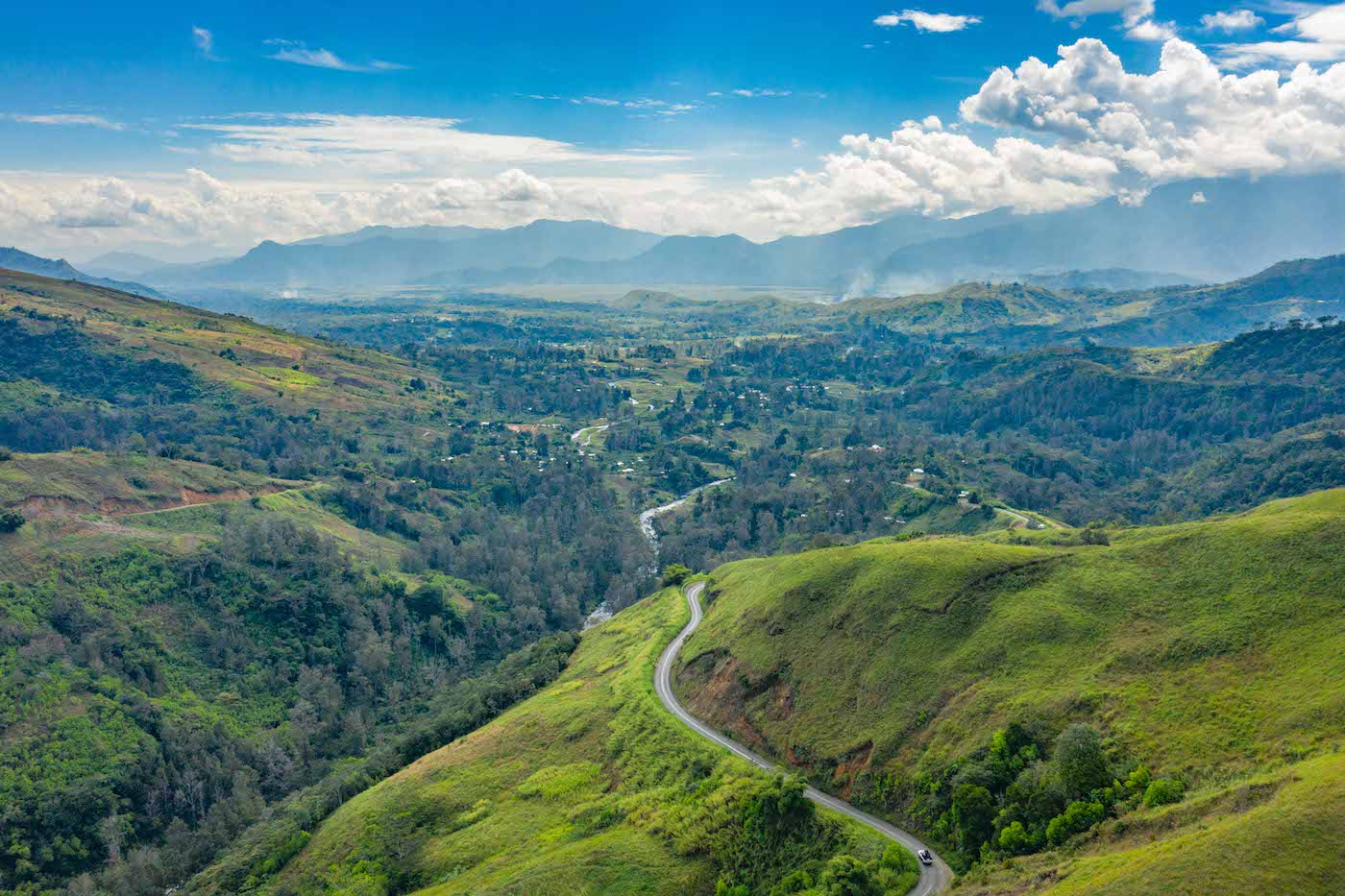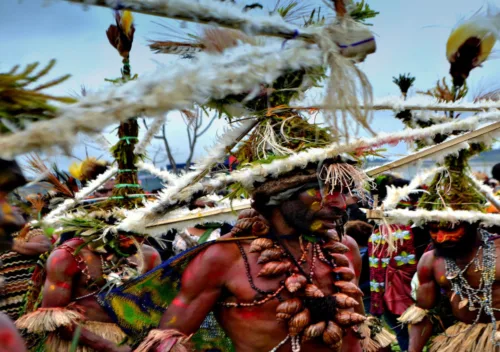The Sepik is an immense, lush, grassland reserve, surrounded by one of the world’s greatest river systems, running 1126 kilometres from its origins high in the mountains to the sea.
The people along the river depend heavily on it for transportation, water and food. Their cultural links with the Sepik River are symbolised in many of their ancient and spiritual rituals, such as the manhood initiation. This requires painful carving of flesh on the backs of young men with razor blades. Patterns are that of a crocodile lying on the banks of the river.
The history of the Sepik region reflects the influence over the years of the missionaries, traders, labour recruiters and administrators.
Here river and crocodiles, man and nature have learned to live in mutual respect. Parts of the Highlands remain untouched just as they were when first ‘discovered’ in 1933.
The people are hardy and village life depends on subsistence farming. Visitors will be fascinated by the bright ochre colours and two–metre high head-dresses swathed in plumes of the Bird of Paradise worn by the tribal elders. Dancing is proud and fierce at traditional sing-sings, with drums beating long into the night.
The Eastern Highlands Province is a one-hour flight north from Port Moresby or half an hour from Lae or Mt Hagen. Once there, you are surrounded by steep, rugged mountains covered in dense rainforest graduating to sub-alpine vegetation.
The valleys are blanketed in grass and the panoramic views contain every imaginable shade of green. Altitude varies from 600 metres in the south to Mt Michael’s 2750 metre summit. Goroka, the largest town and capital, lies at 1600 metres above sea level.
The Sepik River has no actual river delta and stains the sea brown for up to 50 kilometres. It is said that islanders off the coast can draw fresh water straight from the sea. The Sepik River is navigable for almost its entire length and winding its way through the land it resembles a huge, brown, coiling serpent. The force of the river tears great chunks of mud and vegetation out of the river banks and at times these drift downstream and appear as floating islands. You can cruise the middle Sepik aboard the quaint Sepik Spirit, a slow house-boat. In addition, Kilibobo Spirit is available primarily for charter, though it doesn’t have a schedule. On special occasions the ship operates expeditionary cruises to the Sepik and the PNG Islands.
West Sepik or Sandaun Province is near the West Papua (Irian Jaya) border and is inhospitable terrain. It is home to the Upper Sepik people who move around in long, narrow dugout canoes. Travel is always difficult as there are no roads and the rivers are narrow.
The centres are Vanimo and Amanab and villages around here have strong religious beliefs centred on deities that are believed to hold supernatural powers that are vital for survival in this remote and dense countryside.
East Sepik is the middle and lower region from Angoram to Wewak town. There are a number of large rubber and cocoa plantations along the river flats.
Wewak is an attractive palm-fringed town, which felt the might of Japanese troops who ‘discovered’ its isolation and its hidden ports around Kairiuru Island.
Many war memories remain around the plantations and a Japanese gun still points from the eastern end of the island.





